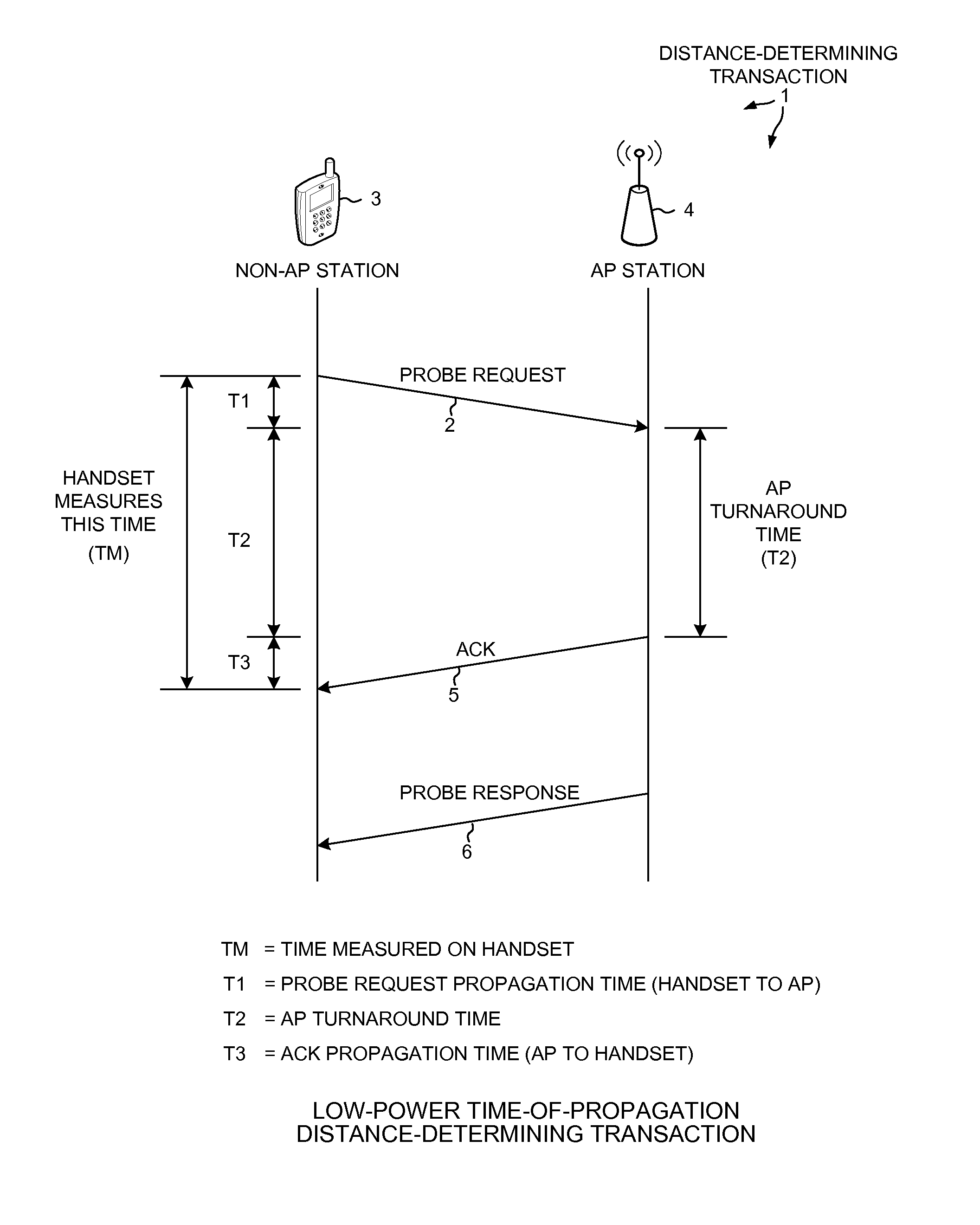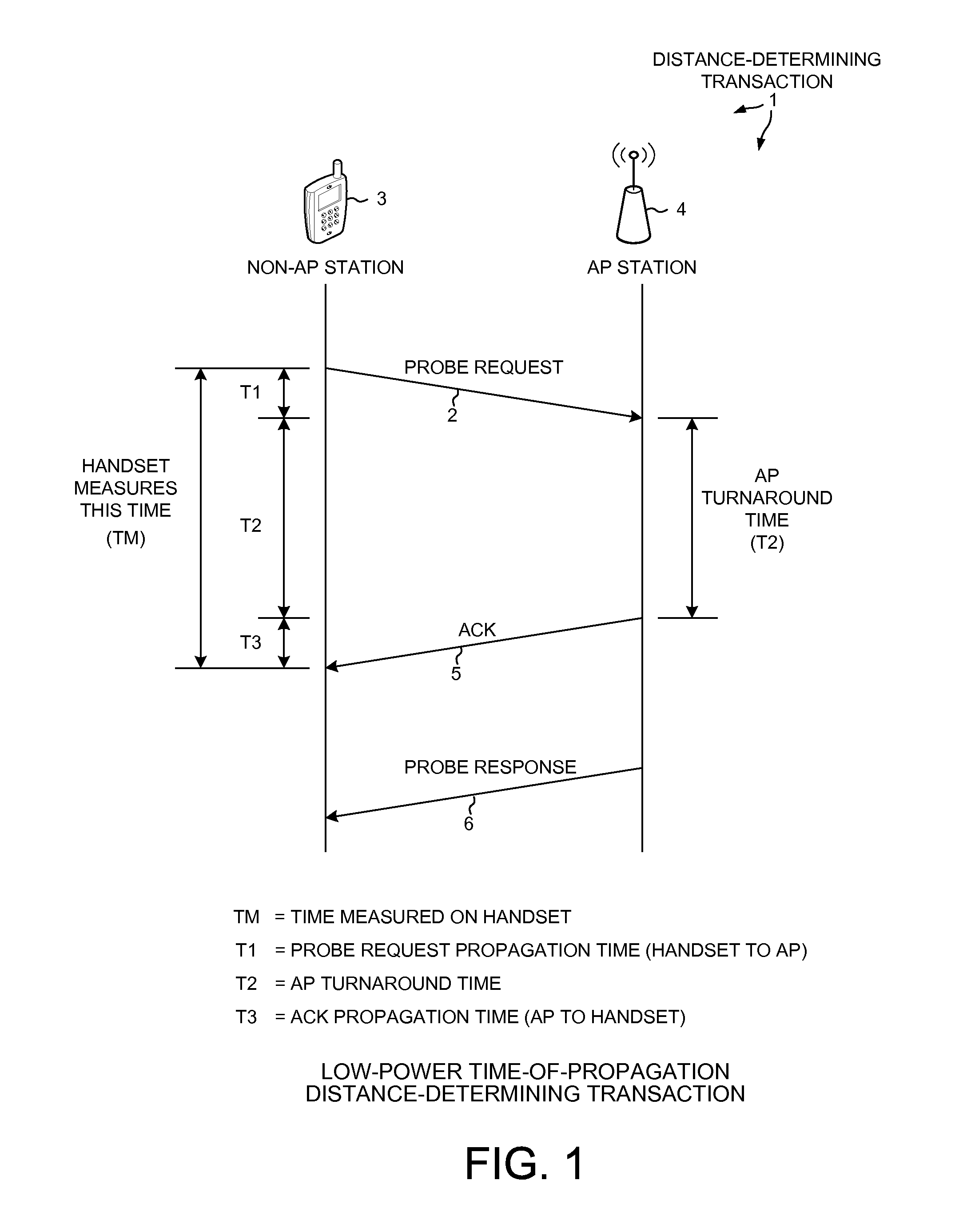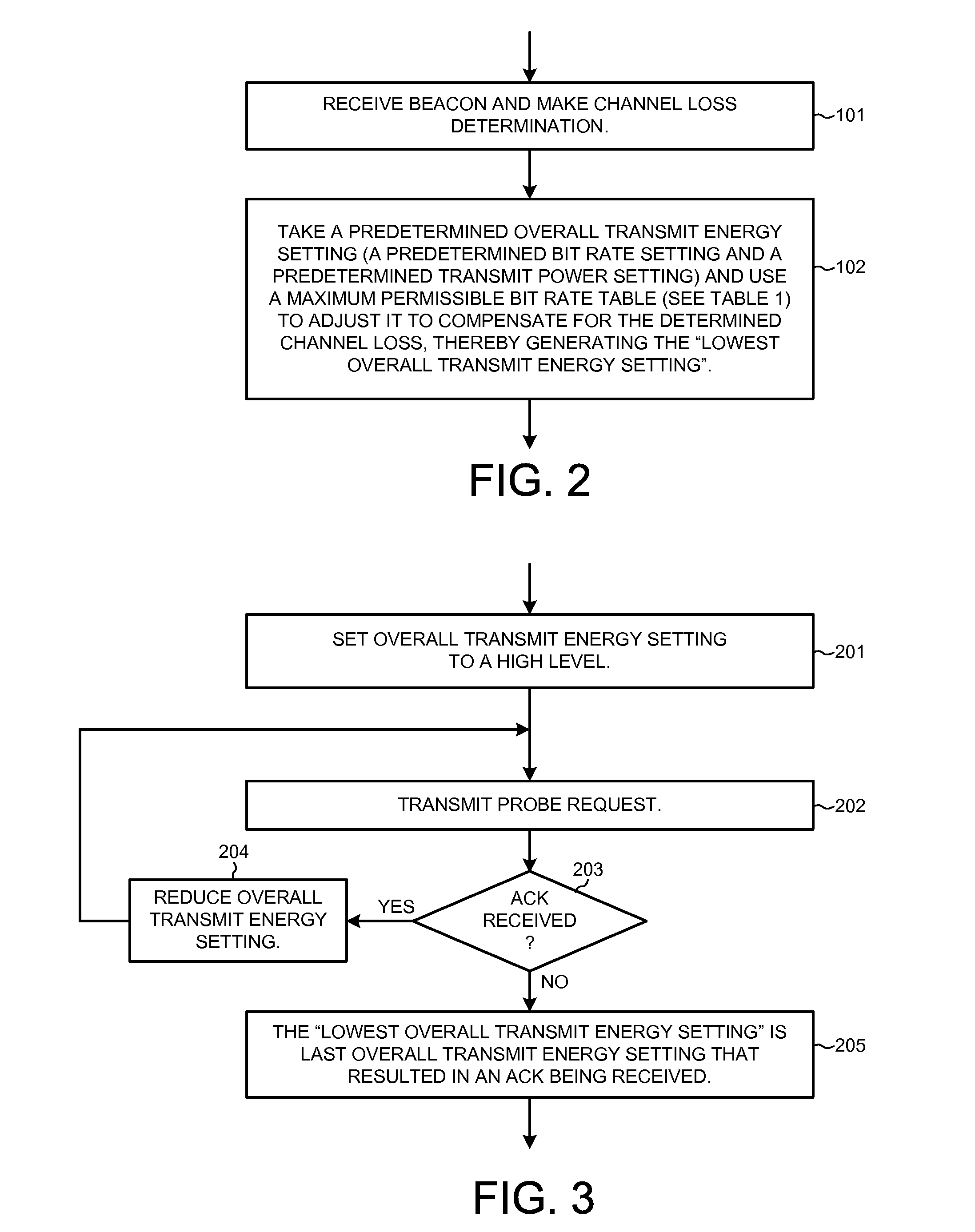Method of selecting bit rate and transmit power for energy-efficient transmission
a bit rate and transmission power technology, applied in power management, instruments, reradiation, etc., can solve the problems of environmental dependence, substantial error in distance determination, and affecting channel loss, so as to reduce power consumption, reduce overall transmit energy, and measure the dependability of the probe request being received
- Summary
- Abstract
- Description
- Claims
- Application Information
AI Technical Summary
Benefits of technology
Problems solved by technology
Method used
Image
Examples
Embodiment Construction
[0018]FIG. 1 is a diagram of a low-power time-of-propagation distance-determining transaction and method 1. The transaction involves sending a transmission called a “probe request”2 from a non-AP station 3 (for example, a mobile communication device such as a cellular telephone handset) to an AP station 4. In sending the probe request, if the bit rate is low then more time is required at the transmitter of the handset to transmit each bit of the probe request. If the bit rate is high, then a shorter amount of time is required at the transmitter of the handset to transmit each bit of the probe request. How long it takes to transmit the probe request 2 therefore depends on the bit rate. The time T1 it takes for the probe request 2 to propagate from the handset 3 to the AP 4 is, however, a function of the distance between the handset 3 and the AP 4 and is independent of the bit rate used.
[0019]Next in the time-of-propagation distance-determining transaction there is a turnaround time T...
PUM
 Login to View More
Login to View More Abstract
Description
Claims
Application Information
 Login to View More
Login to View More - R&D
- Intellectual Property
- Life Sciences
- Materials
- Tech Scout
- Unparalleled Data Quality
- Higher Quality Content
- 60% Fewer Hallucinations
Browse by: Latest US Patents, China's latest patents, Technical Efficacy Thesaurus, Application Domain, Technology Topic, Popular Technical Reports.
© 2025 PatSnap. All rights reserved.Legal|Privacy policy|Modern Slavery Act Transparency Statement|Sitemap|About US| Contact US: help@patsnap.com



